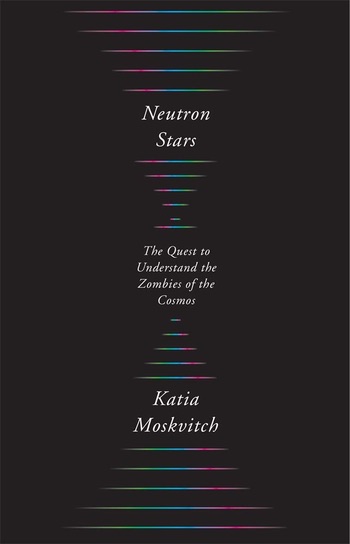Review: Neutron Starsby Jeff Foust
|
| “But then there are the cosmic zombies—the neutron stars,” she writes. “Ultra-dense, a smidgen or two away from turning into a black hole, they have a life beyond death.” |
The concept of the neutron star emerged in the 1930s just a few years after the discovery of the neutron itself, when astronomer Fritz Zwicky suggested a star made of neutrons might be created in a supernova (see “Review: Zwicky: The Outcast Genius Who Unmasked the Universe”, The Space Review, September 30, 2019). However, it took more than three decades after Zwicky’s proposal before a graduate student in England, Jocelyn Bell, discovered a pulsing radio source, or pulsar, that astronomers soon concluded was a rapidly spinning neutron star—a discovery that resulted in a Nobel Prize whose recipients, infamously, excluded Bell.
In the roughly half-century since Bell’s discovery, astronomers have found many more neutron stars, but are still only beginning to understand the stars themselves. “Our problem is that the physics of how matter behaves inside neutron stars is so extreme that our models struggle to truly explain their behavior,” Moskvitch writes in one chapter, where she outlines what we do know about the structure of neutron stars, from an iron crust a kilometer thick to a superfluid mix of neutrons and other particles in the outer core (scientists “have absolutely no clue” about the inner core of neutron stars, she writes.) Other parts of the book recount the discovery of planets orbiting a pulsar, a finding that predates the discovery of exoplanets around more Sun-like stars, as well as how neutron stars have been spoilers of sorts for studies of dark matter.
Moskvitch crisscrosses the globe for the book, visiting observatories from England to Australia and from Chile to British Columbia that are involved in studies of neutron stars. She also recounts the first observation of a neutron star collision made by the LIGO and Virgo gravitational wave detectors. That helps create an engaging book about the science of neutron stars, as well as the scientists involved in that research.
In the book’s epilogue, Moskvitch says that most stars disappear at the end of their lives, either by becoming black holes or simply fading away. “But then there are the cosmic zombies—the neutron stars,” she writes. “Ultra-dense, a smidgen or two away from turning into a black hole, they have a life beyond death: they send out radio waves, gamma ways, x-rays, and maybe the enigmatic fast radio bursts.” After reading Neutron Stars, you can see why they are so intriguing, if difficult to understand.
Note: we are temporarily moderating all comments submitted to deal with a surge in spam.
